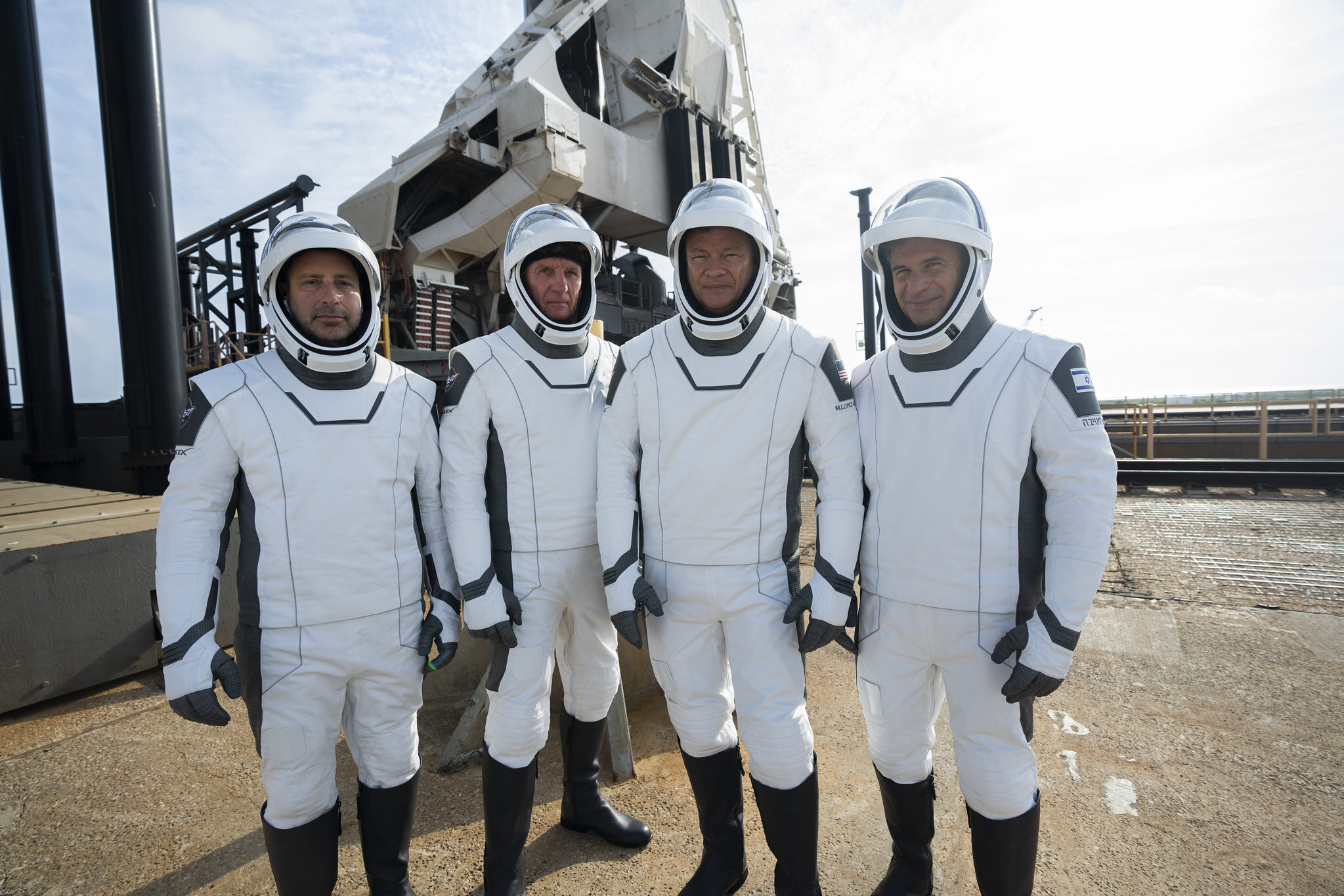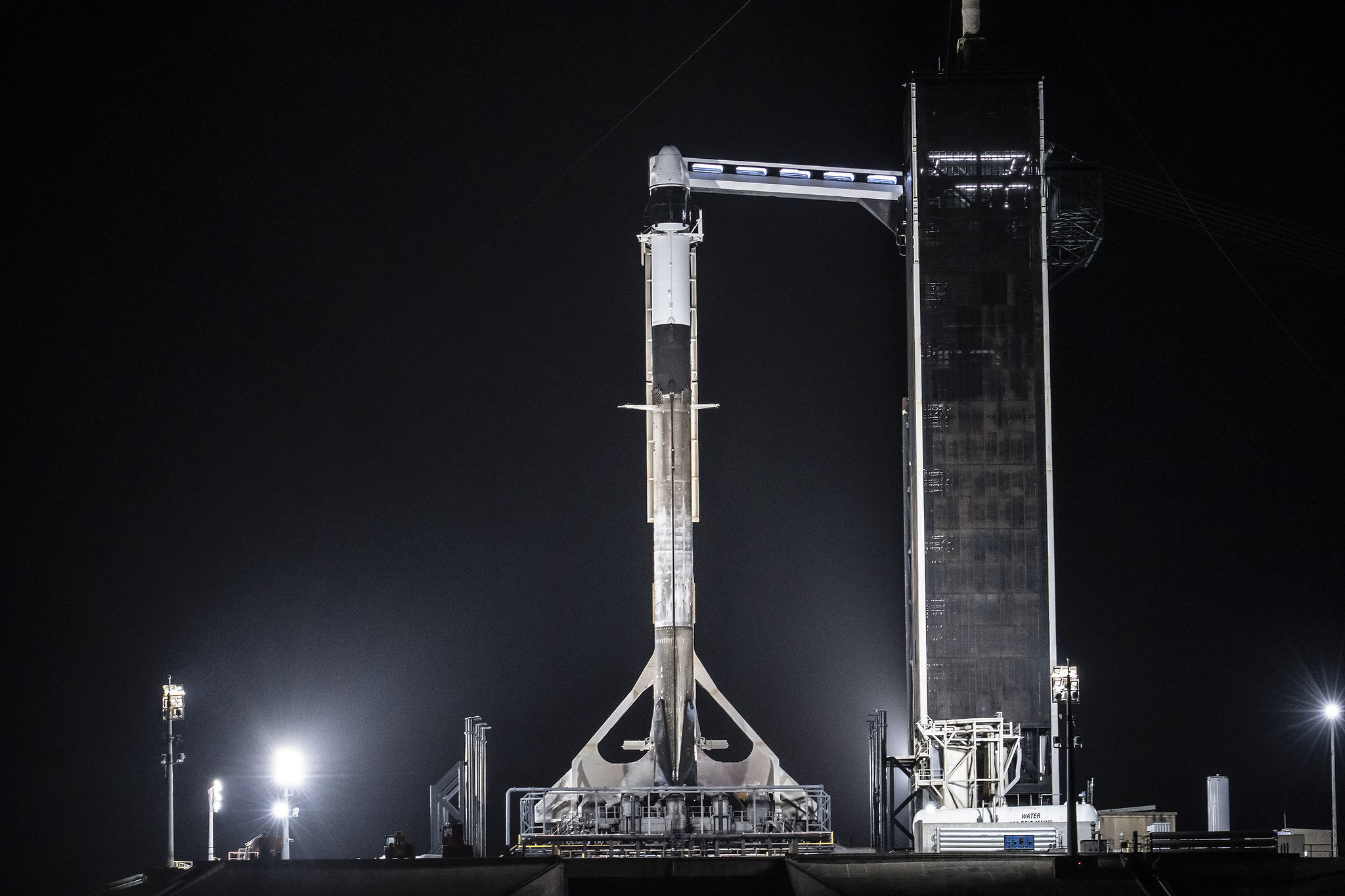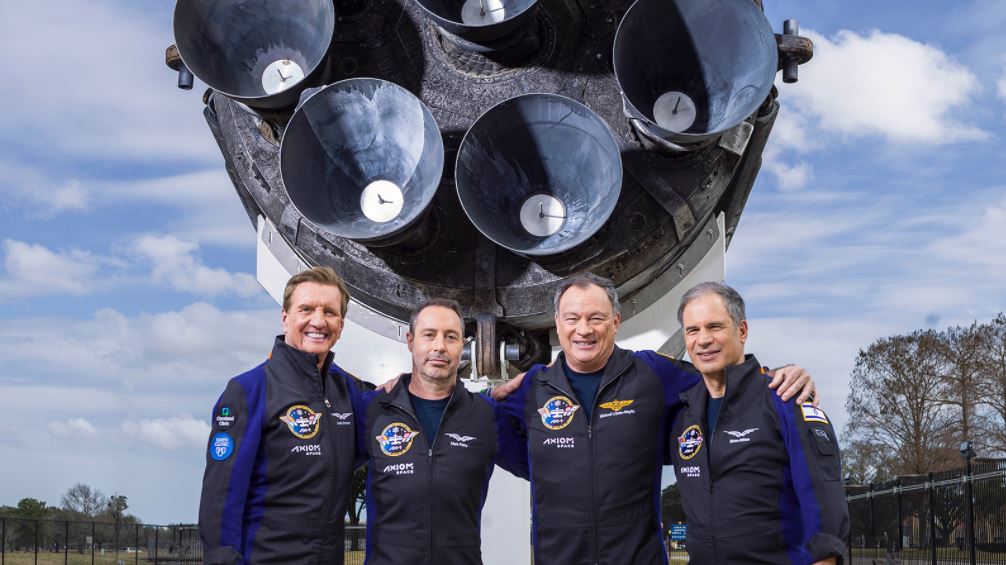
The Ax-1 Mission Astronauts Are On Their Way To The International Space Station
Space offers a one-of-a-kind environment where many unique things are possible. This includes special manufacturing, science, research, and much more. All of which are planned to be tested on the Ax-1 Mission. With the help of SpaceX, NASA, and other agencies, this mission is working towards becoming a big step for the space industry and the future of space access.
After a lot of planning and prep, the first private astronauts are on their way to the International Space Station. This marks the beginning of the just over week-long trip going to and from the ISS. Once on board, the astronauts will work on a long list of various important research and science tasks, making sure to stay busy and make the most of the time on board.
Now that the Falcon 9 has launched and the Dragon capsule is in orbit, there is still a lot of work and time prior to docking to the ISS. Not only this, but the different research and general activities the astronauts do on board is meant to provide invaluable information and mark the start of something special. Here I will go more in-depth into the launch progress, full timeline, and what to expect once all four astronauts have arrived at the ISS.
Launch Update

Today, April 8th, the Ax-1 crew lifted off on top of a Falcon 9 at around 11:17 AM, ET. As of right now, they have begun the journey to the International Space Station. The instantaneous launch window opened at 11:17 a.m. ET, with a backup opportunity available on Saturday, April 9. However, fortunately, this was not needed. This was the fifth flight for this Falcon 9 first stage booster, which previously supported the launch of GPS III Space Vehicle 04, GPS III Space Vehicle 05, Inspiration4, and one Starlink mission. In addition, the Dragon spacecraft supporting this mission previously flew the Demo-2 and Crew-2 missions.
Right after lifting off right on time, the Falcon 9 began accelerating and gaining altitude. Around 1 minute and 15 seconds in they had reached Max-Q. Only around 1 minute and 25 seconds later or 2 minutes and 40 seconds after launch, the Falcon 9 first stage engines cut off apart of MECO or Main Engine Cut Off. At the same time, the booster and upper stage separated shortly followed by Second Engine Startup. Not long after the booster successfully completed its first burn also known as the entry burn. Finally, around 9 minutes and 30 seconds after launch the first stage perfectly landed on the drone ship A Shortfall of Gravitas. The second stage engine was cut off just before and the Dragon Capsule was deployed around 12 minutes after launch. It now has a long journey all the way to the ISS. On its flight to the International Space Station, Dragon will execute a series of burns that positions the vehicle progressively closer to the station before it executes final docking maneuvers, followed by pressurization of the vestibule, hatch opening, and crew ingress. Looking at Mission Timeline, we can expect to see Dragon dock with the ISS tomorrow morning at 7:45 AM, ET. So far every aspect of the mission has been a great success and not long from now a few of the first ever private astronauts will step foot on the International Space Station. During their 10-day mission, the crew members will spend eight days on the ISS conducting more than 25 scientific research and technology demonstrations. This robust portfolio opens more opportunities to scientists and researchers around the globe and will provide vital data in preparation for Axiom Station, the world’s first commercial space station.
After the launch, there was a lot to be said about the mission and what it means for the future of the space industry. “I first want to congratulate Michael, Larry, Eytan, and Mark. We will usher in a new era in private human spaceflight when they cross the threshold to enter the ISS,” said Michael Suffredini, president and CEO of Axiom Space. “This journey is the culmination of long hours of training, planning, and dedication from the crew and the entire Axiom Space team, our partners at SpaceX, and of course, a credit to NASA’s vision to develop a sustainable presence in low-Earth orbit.” NASA and ESA astronauts and Roscosmos cosmonauts already aboard the space station will welcome the Ax-1 crew after docking. “What a historic launch! Thank you to the dedicated teams at NASA who have worked tirelessly to make this mission a reality,” said Administrator Bill Nelson. “NASA’s partnership with industry through the commercial cargo and crew programs has led our nation to this new era in human spaceflight — one with limitless potential. Congratulations to Axiom, SpaceX, and the Axiom-1 crew for making this first private mission to the International Space Station a reality.” Lastly, only hours ago right after the launch. Axiom Space tweeted saying, “The #Ax1 crew will now travel for 20.5 hours and arrive at the @Space_Station at around 7:45 am ET.” A few hours before we can expect another broadcast to highlight the docking and final procedures.
Plans On The ISS

Now that the four astronauts are on the way to the International Space Station, we can take a closer look at what to expect during their 8 days aboard the laboratory. Specifically, this mission involves a robust microgravity research portfolio spread between each of the astronauts. This means that each astronaut has specific plans and goals prior to arriving at the space station. Mark Pathy, for example, is expected to take part in additional research projects with other universities across Canada, including research led by Université de Montréal on Spaceflight-Associated Neuro-Ocular Syndrome (SANS), which manifests through changes in visual acuity experienced by many astronauts on long-duration space flights and is considered a risk for deep space exploration. Additional research projects are conducted in partnership with researchers at UBC, Ontario Tech, Simon Fraser University, and University of Calgary, which were selected following consultations facilitated by the Canadian Space Agency with the space research community. In addition to human research, Pathy plans to lead Earth observation activities which will contribute to further analysis of the impact of climate change, urbanization, and other factors on the ecology and human habitation of North America. This is led by Western University as well as The Royal Canadian Geographical Society (RCGS). He is taking part in a program by RCGS that is intended to engage national and international audiences in addressing the environmental health and sustainability of the Great Lakes and their ecosystem, promoting conservation, restoration, protection, and reconciliation with the water, the land, and the Indigenous peoples of the watershed. Pathy has also integrated additional educational initiatives into his Ax-1 activities, providing STEM curriculum to more than a dozen high schools across Canada.
Eytan Stibbe, Ax-1 mission specialist, provides the unique opportunity for Israeli entrepreneurs and researchers to advance innovative ideas and will provide a rare platform for them to test their enterprises in a unique study environment, thereby contributing to the international and Israeli research ecosystem,” said Inbal Kreiss, Chairwomen of the Scientific and Technological Committee and Head of Innovation of Systems Missiles and Space Group at Israel Aerospace Industries. “The mission gives expression to international collaborations between the world’s most prominent academic and research institutions, start-ups and tech companies, medical institutions, and more.” Not only this but, “A groundbreaking number of experiments were chosen by a scientific and technological committee and integrated with NASA. The experiments are innovative and trailblazing, arising from diverse disciplines – astrophysics, agriculture, optics, communication, biology, healthcare, neurology, and ophthalmology – and were chosen based on their potential impact on research and innovative approach. They are expected to lead to technological, scientific, and medical breakthroughs that will impact the quality of human life on Earth and the future of humanity’s long-term missions beyond Earth.”
Finally, there is the last private astronaut, Larry Connor, who is the Ax-1 mission pilot. Connor’s research projects are the result of long-time partnerships with Mayo Clinic and Cleveland Clinic. The Ohio native has helped fund groundbreaking research at both institutions for much of the last decade. Connor’s experiments on behalf of Mayo Clinic would provide data on space travel’s impact on senescent cells and heart health. Connor is expected to be in charge of maintaining senescent cells, cells that have stopped dividing, at the ISS. These cells are linked to multiple age-related diseases.
Conclusion
After a lot of planning and preparation, the first private astronauts are headed to the International Space Station. Early this morning they took off from Launch Complex 39A on top of a Falcon 9. The launch was very successful and saw the astronauts sent into orbit along with the booster safely landing on the drone ship. Around 20 hours from now we should expect to see the astronauts arrive at the ISS and attempt to dock with the space station. We will have to wait and see how the mission progresses and the impact it has on the space industry.
